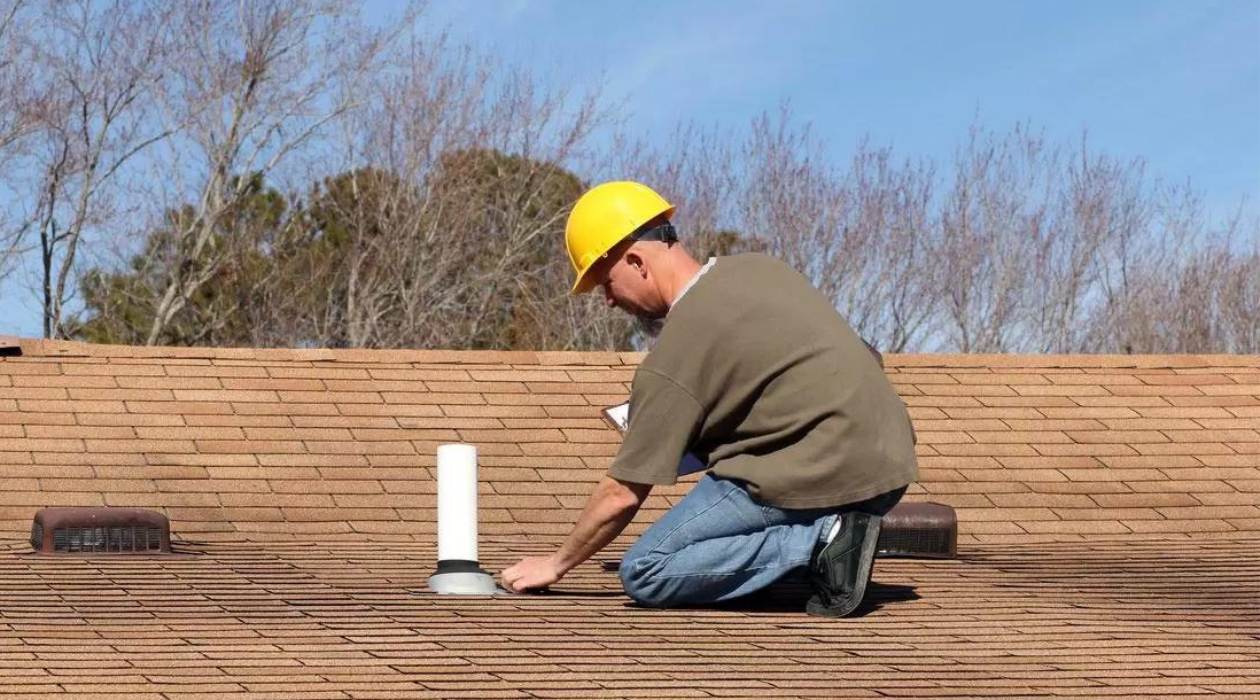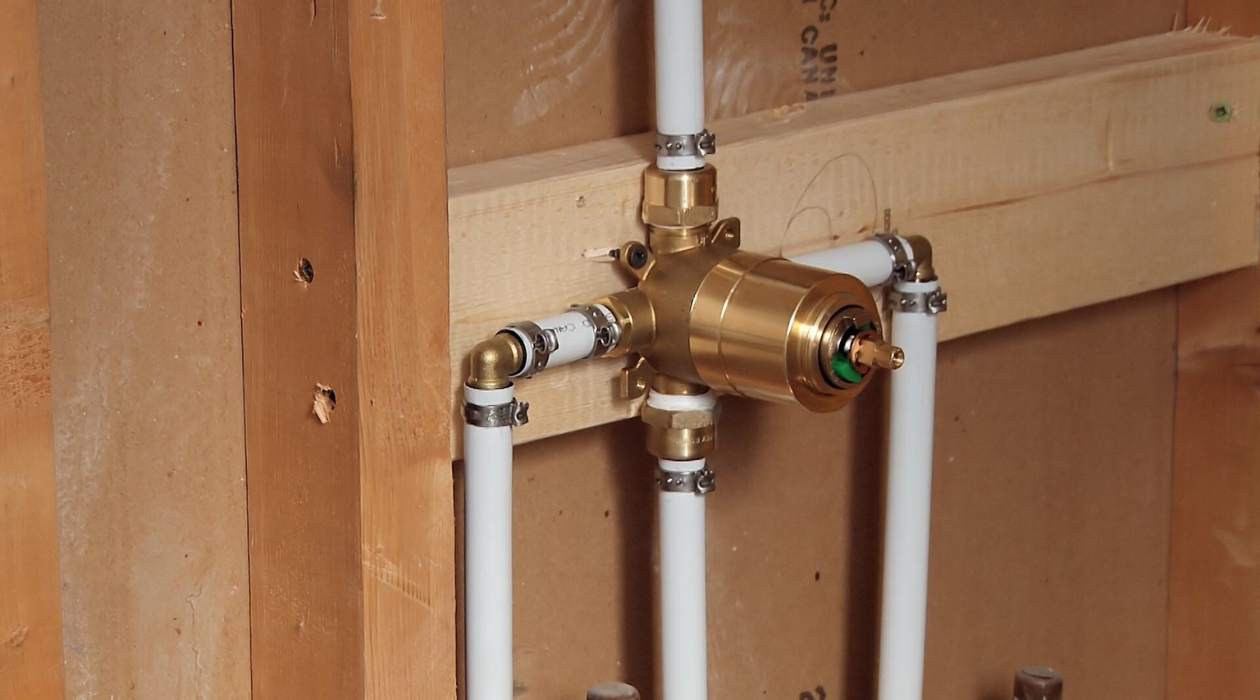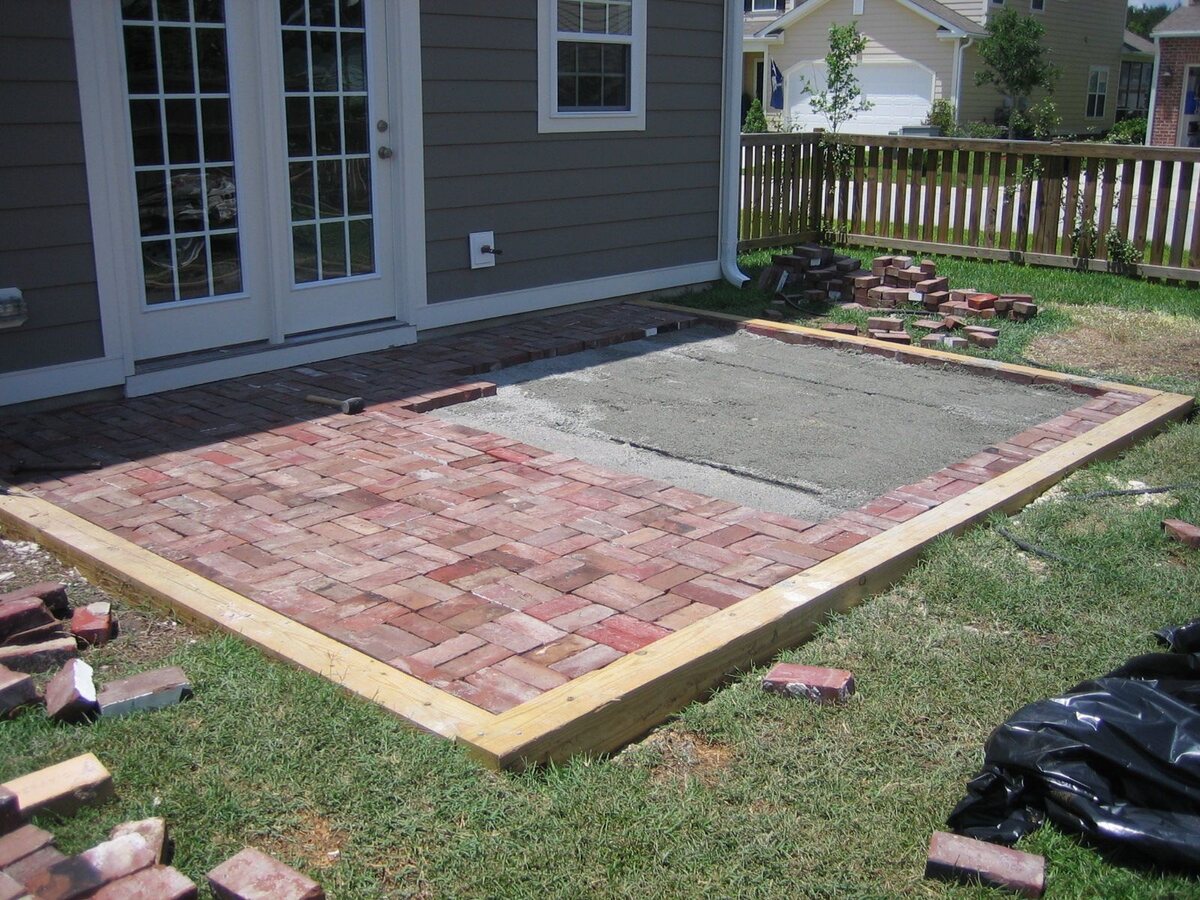

Articles
How Many Plumbing Vents Do You Need
Modified: March 2, 2024
Find out how many plumbing vents you need in this informative article. Learn about the importance of proper venting and avoid common plumbing issues.
(Many of the links in this article redirect to a specific reviewed product. Your purchase of these products through affiliate links helps to generate commission for Storables.com, at no extra cost. Learn more)
Introduction
Welcome to the world of plumbing vents! If you’ve ever wondered how many plumbing vents you need in your home or commercial building, you’re in the right place. Plumbing vents are an essential component of any plumbing system, as they play a crucial role in maintaining proper drainage and preventing sewer gases from entering your living or working space.
But before we dive into the details of determining the number of plumbing vents required, let’s understand what exactly a plumbing vent is and why it is necessary.
Key Takeaways:
- Plumbing vents are essential for maintaining proper drainage and preventing harmful sewer gases. Factors like fixture count, layout, and building codes must be considered when determining the number of vents needed.
- Calculating the number of plumbing vents involves considering fixture units, vent pipe size, and length. Common venting configurations like single stack, island, and loop venting have specific requirements for effective plumbing systems.
Read more: How Many Duvet Covers Do You Need
What is a plumbing vent?
A plumbing vent is a component of the plumbing system that allows wastewater to flow freely, preventing clogs, and preventing harmful gases from building up inside your home or building. It is a pipe that extends vertically from the drainage system to the roof, allowing air to enter and equalize the pressure within the pipes.
Plumbing vents are typically connected to drainpipes and fixtures such as sinks, bathtubs, toilets, and showers. They provide an escape route for sewer gases, preventing unpleasant odors from lingering in your home or causing potential health hazards.
Why do you need plumbing vents?
Plumbing vents serve several important purposes in a plumbing system. Here are some key reasons why plumbing vents are necessary:
- Preventing suction: Without proper venting, the draining of wastewater can create a suction effect, leading to slow draining or even backflow.
- Preventing traps from being siphoned: Plumbing traps, such as the U-shaped bend under a sink, are designed to hold water, creating a barrier against sewer gas entering your home. A vent allows air to enter the system, preventing traps from being siphoned dry.
- Equalizing pressure: Plumbing vents help equalize the pressure within the pipes, preventing fluctuations that can impact drainage and the overall functioning of your plumbing system.
- Ensuring proper drainage: Vents facilitate the smooth flow of wastewater by providing air for the water to pass through the drainpipes more efficiently.
To ensure the effectiveness of a plumbing system, it’s crucial to determine the correct number of plumbing vents based on various factors. Let’s explore these factors in the next section.
Key Takeaways:
- Plumbing vents are essential for maintaining proper drainage and preventing harmful sewer gases. Factors like fixture count, layout, and building codes must be considered when determining the number of vents needed.
- Calculating the number of plumbing vents involves considering fixture units, vent pipe size, and length. Common venting configurations like single stack, island, and loop venting have specific requirements for effective plumbing systems.
Read more: How Many Duvet Covers Do You Need
What is a plumbing vent?
A plumbing vent is a crucial component of a plumbing system that helps maintain the proper functioning of drainage and sewage systems in residential and commercial buildings. It is a pipe or a network of pipes that extends vertically from various fixtures and drain lines to the outdoors, typically through the roof.
The primary purpose of a plumbing vent is to provide an escape route for sewer gases and prevent them from entering the living or working space. These gases, such as methane and hydrogen sulfide, are byproducts of the decomposition of organic matter in the sewer system and can be harmful if inhaled in large quantities. Plumbing vents also serve other important functions:
1. Equalizing Pressure:
As wastewater flows down drainpipes, it creates a vacuum-like force that can lead to slow drainage, gurgling sounds, or even trap siphoning. A plumbing vent allows air to enter the system, equalizing the pressure and preventing these issues. Without proper ventilation, drainpipes can become negatively pressurized, hindering the smooth flow of water and causing potential problems.
Read more: How Many Amps Do You Need For A Hot Tub
2. Preventing Suction:
By providing a pathway for air to enter the drainpipes, plumbing vents prevent the formation of negative pressure or suction. Suction occurs when water rushing down a drain restricts the flow of air, resulting in a vacuum effect. This suction can cause drain traps to empty, leading to foul odors, backflow, or even drawing pollutants into the water supply.
3. Eliminating Gurgling Sounds:
If you’ve ever heard gurgling sounds coming from your drains, it’s a sign of inadequate venting. When wastewater goes down a drain, it displaces the air in the pipe. Without a vent, this displaced air tries to escape through the nearest venting point, which can create gurgling noises in drains or toilets. Proper venting ensures that air can easily flow in and out of the drain system, preventing such noises.
4. Enhancing Drainage Efficiency:
Plumbing vents improve the overall performance and efficiency of drainage systems by providing the necessary air pressure balance. When wastewater flows through drainpipes, it requires air to push it along and prevent interruptions or blockages. The presence of vents ensures a continuous supply of air, allowing for smoother drainage and preventing backups.
5. Mitigating Odors:
One of the most crucial functions of plumbing vents is to prevent unpleasant sewer odors from infiltrating your home or workplace. By venting sewer gases to the outdoors, plumbing vents help maintain a fresh and odor-free environment.
By understanding the importance of plumbing vents and how they function, you can appreciate their role in ensuring the proper operation of your plumbing system. In the next section, we will explore the factors to consider when determining the number of plumbing vents needed for a building.
Why do you need plumbing vents?
Plumbing vents are an essential component of any plumbing system, serving multiple important functions. Let’s explore why plumbing vents are necessary in residential and commercial buildings:
1. Preventing Suction and Backflow:
Without proper venting, drain lines can create a suction effect when wastewater flows through them. This suction can lead to slow draining and even backflow, causing water to flow in the opposite direction. Backflow not only disrupts the functioning of the plumbing system but also poses health risks by potentially contaminating the water supply.
2. Equalizing Pressure:
Air pressure within the plumbing system needs to be balanced for optimal performance. Plumbing vents help equalize the pressure by providing a way for air to enter the system. This prevents the formation of negative pressure, which can impede the flow of wastewater and result in drainage issues.
3. Preventing Trap Siphoning:
Plumbing traps, such as the U-shaped bends in sink drains, are designed to hold water to create a barrier against sewer gases. If a plumbing system lacks proper venting, the water in these traps can be siphoned out, allowing sewer gases to enter your living or working space. Plumbing vents ensure that traps remain filled with water, maintaining a seal and preventing noxious odors from permeating your property.
4. Allowing for Efficient Drainage:
Venting allows air to enter the drain lines, facilitating the smooth flow of wastewater. As water flows downward, air needs to be present to prevent the water from creating a vacuum effect that could hinder proper drainage. Plumbing vents prevent potential blockages and backups by ensuring continuous airflow within the plumbing system.
5. Venting Harmful Sewer Gases:
Sewer gases contain a variety of harmful substances, including methane and hydrogen sulfide. These gases can pose health risks if inhaled in large quantities. Plumbing vents provide a way for these gases to escape safely to the outdoors, preventing them from accumulating within the building.
6. Reducing Odors:
One of the most noticeable benefits of plumbing vents is their ability to reduce unpleasant odors associated with sewage and wastewater. By venting sewer gases outside, plumbing vents help maintain a fresh and odor-free indoor environment.
Overall, plumbing vents are crucial for the proper functioning and safety of a plumbing system. They prevent suction, backflow, and trap siphoning, equalize pressure, allow for efficient drainage, and minimize odors. In the next section, we will explore the factors to consider when determining the number of plumbing vents needed in a building.
Factors to consider when determining the number of plumbing vents needed
When determining the number of plumbing vents needed for a building, several factors come into play. Here are some key aspects to consider:
1. Fixture Count:
The number and type of fixtures in a building will influence the venting requirements. Each fixture, such as sinks, toilets, showers, and bathtubs, usually requires its own vent connection to ensure proper drainage. Larger buildings with more fixtures will typically require a greater number of plumbing vents.
2. Distance and Layout:
The layout and distance between fixtures and drain lines should be taken into account. Plumbing vents need to be strategically placed to provide adequate venting coverage throughout the building. Longer drain lines may require additional vents to maintain effective venting pressure.
3. Building Code and Regulations:
Local building codes and regulations often specify the venting requirements based on the type of building and its intended use. It is essential to consult these regulations to ensure compliance and proper venting installation.
4. Pipe Size and Volume:
The diameter and volume of drain pipes also affect the venting requirements. Larger drain pipes may require larger vents to accommodate the increased flow of wastewater. Additionally, branch lines and horizontal sections of drain pipes may require additional vents to ensure proper venting and prevent negative pressure.
Read more: How Big Of A Gable Vent Do I Need?
5. Stack Venting or Individual Vents:
There are different venting configurations to consider, such as stack venting or individual vents for each fixture. Stack venting involves a main vent stack that connects to each floor and provides venting for multiple fixtures. Individual vents, on the other hand, connect directly to each fixture. The choice between these configurations will depend on the building’s design and the plumbing system’s layout.
6. Roof Penetrations:
Venting requires roof penetrations to extend the plumbing vents to the exterior. The number and placement of these penetrations should be considered when determining the venting requirements, taking into account factors such as roof slope, aesthetics, and potential obstructions.
7. Professional Guidance:
It is recommended to seek professional guidance from a licensed plumber or building inspector when determining the number of plumbing vents required. They can assess the specific needs of your building and ensure compliance with local codes and regulations.
By considering these factors and seeking expert advice, you can determine the appropriate number of plumbing vents needed for your building. In the next section, we will discuss how to calculate the number of plumbing vents required based on these factors.
How to calculate the number of plumbing vents required
Calculating the number of plumbing vents required for a building involves considering several factors. While it is advisable to consult with a professional plumber or building inspector for an accurate assessment, here are some general guidelines to help you estimate the venting needs:
Read more: When Do I Need A Plumbing Permit
1. Determine Fixture Units:
Start by determining the fixture units (FU) for each fixture in your building. Fixture units represent the drainage load that each fixture contributes to the plumbing system. You can find fixture unit values for different fixtures in plumbing codes, manufacturer specifications, or professional plumbing references.
2. Total the Fixture Units:
Add up the fixture units for all the fixtures in your building. This will give you a total fixture unit count, which serves as a basis for determining the venting requirements.
3. Check Venting Code Requirements:
Consult local plumbing codes and regulations to determine the venting requirements based on the total fixture unit count. Codes may specify the minimum venting capacity needed for a certain number of fixture units. Ensure that your chosen venting configuration meets these requirements.
4. Consider Vent Pipe Size:
The diameter of vent pipes is crucial for effective venting. Larger diameter vent pipes can accommodate more airflow and are generally needed for higher fixture unit counts. Refer to plumbing codes or consult a professional to determine the appropriate vent pipe size required for your specific situation.
Read more: How To Install A Plumbing Vent
5. Calculate Vent Pipe Length:
The total length of vent pipes also affects the venting capacity. Longer vent pipes may require additional vent connections to maintain proper venting pressure. Measure the distance from each fixture to the vent stack or the vent connection point to determine the lengths of vent pipes needed.
6. Plan the Venting Configuration:
Based on your fixture unit count, vent pipe size, and vent pipe lengths, plan the venting configuration for your building. This will involve determining the location of the vent stack, the placement of branch vents, and the connections between the fixtures and the vent system. Refer to plumbing codes or consult a professional for guidance on proper venting configurations.
7. Consider Appliance Venting:
Some appliances, such as water heaters or laundry machines, may have their own venting requirements. Consider these requirements and ensure that they are incorporated into your overall venting plan.
Remember, these are general guidelines, and the venting requirements may vary based on local codes, building design, and specific plumbing scenarios. It is always recommended to consult with a professional plumber or building inspector for an accurate assessment and to ensure compliance with regulations.
In the next section, we will explore some common venting configurations and their requirements to further enhance your understanding of plumbing venting needs.
Common configurations and their venting requirements
There are several common plumbing venting configurations that are used in residential and commercial buildings. Each configuration has specific venting requirements to ensure the proper functioning of the plumbing system. Let’s explore some of these configurations and their associated venting needs:
Read more: How Do You Clean Dryer Vent
1. Single Stack Venting:
In this configuration, a single vent stack extends vertically through the building, connecting to each branch line and fixture along the way. The vent stack provides venting for multiple fixtures on different floors. The vent stack should be sized appropriately based on the total fixture unit count and the number of fixture connections it serves.
This configuration requires branch vents to connect the individual fixtures to the vent stack. Each branch vent should be properly sized and installed to ensure adequate venting for the associated fixtures.
2. Island Venting:
Island venting is used when fixtures, such as sinks or dishwashers, are located in the middle of a room away from the walls. In this configuration, a vent pipe extends vertically from the island fixture and connects to the main vent stack or a vent line in the ceiling.
The island vent should be sized appropriately based on the fixture unit count and the specific fixture it serves. It should also be properly connected to the vent stack or the vent line to ensure proper venting.
3. Loop Venting:
Loop venting is commonly used in bathroom groups or when fixtures are located closely together. In this configuration, a loop vent connects multiple fixtures in a circuit, with one end connecting to the vent stack or vent line and the other end venting to the open air.
This configuration requires proper sizing and arrangement of the loop vent to ensure adequate venting for all the fixtures it serves. Each fixture connection to the loop vent should be properly vented to prevent any disruptions in airflow.
4. Combination Waste and Vent System:
In some cases, a combination waste and vent system is used where the same pipe serves as both the drain and the vent. This configuration is commonly used for fixture groups that are in proximity to each other, such as multiple sinks in a commercial kitchen.
The combination waste and vent system requires proper sizing of the shared pipe to ensure that it can accommodate both waste flow and venting needs. The pipe should also be properly pitched to prevent drainage issues and allow for adequate venting.
Keep in mind that these are just a few examples of common plumbing venting configurations. The specific venting requirements may vary depending on the building layout, plumbing codes, and other factors. It is important to consult with a professional plumber or building inspector to ensure that the chosen venting configuration meets all the necessary requirements.
Now that we have explored common venting configurations, let’s conclude the article with a summary of the key points discussed.
Read more: How To Vent A Bathroom Plumbing
Conclusion
Plumbing vents play a vital role in maintaining the proper functioning of a plumbing system in residential and commercial buildings. They prevent suction, backflow, and trap siphoning, equalize pressure, allow for efficient drainage, and help eliminate sewer odors. Determining the number and configuration of plumbing vents is crucial for an effective and safe plumbing system.
When determining the number of plumbing vents required, factors such as fixture count, distance/layout, building codes and regulations, pipe size/volume, and roof penetrations should be considered. Consulting with a professional plumber or building inspector is recommended to ensure accurate assessment and compliance with local codes.
To estimate the number of plumbing vents needed, calculating fixture units, checking code requirements, considering vent pipe size/length, and planning the venting configuration are essential steps. These calculations should be done with care to ensure adequate venting capacity for the specific building structure and usage.
Several common venting configurations, such as single stack venting, island venting, loop venting, and combination waste and vent systems, are used in plumbing systems. Each configuration has its own venting requirements, and proper sizing and installation of vents are crucial for their effectiveness.
In conclusion, understanding the importance of plumbing vents and their role in maintaining a healthy and efficient plumbing system is crucial for homeowners and building owners. By considering factors such as fixture count, layout, code requirements, and venting configurations, you can ensure the proper design and installation of plumbing vents in your building.
Remember, it is always recommended to seek guidance from a professional plumber or building inspector to ensure compliance with local regulations and to ensure the safety and functionality of your plumbing system.
Frequently Asked Questions about How Many Plumbing Vents Do You Need
Was this page helpful?
At Storables.com, we guarantee accurate and reliable information. Our content, validated by Expert Board Contributors, is crafted following stringent Editorial Policies. We're committed to providing you with well-researched, expert-backed insights for all your informational needs.







0 thoughts on “How Many Plumbing Vents Do You Need”